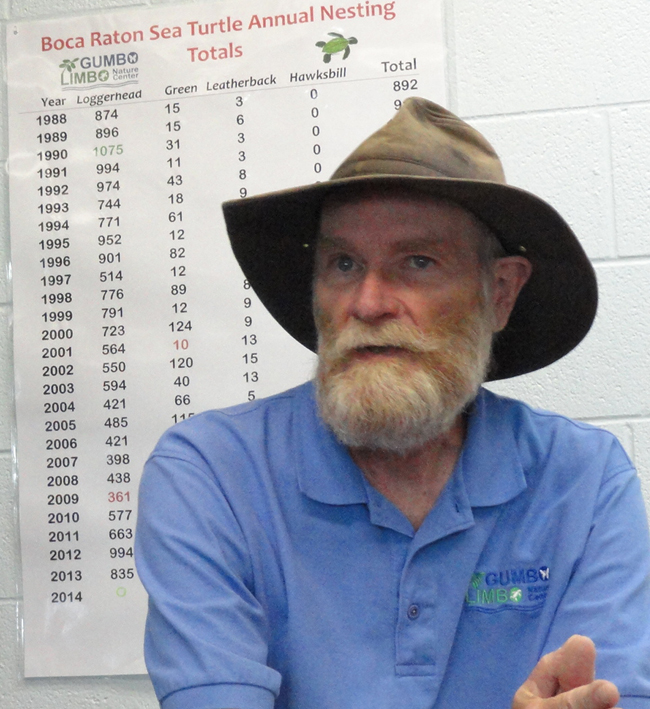New Perils Endanger Sea Turtles

Photo by Marvin Williams.
By Daniel Candella
Mr. Coco and Nuclear, two juvenile green sea turtles, whiz around their tank at Gumbo Limbo Nature Center in Boca Raton, Fla. Only a few years old, the turtles, listed as an endangered species, are doing worlds better than when they first arrived.
Scientists and volunteers at the rehabilitation center take in dozens of sick and injured turtles, like loggerhead, leatherback and green sea turtles, each year. Many of them were stranded on the beach, hit by propellers, snagged by fishing hooks, or became ill from ingesting plastic dumped into the ocean.
But there is a new threat devastating the turtle population.

Photo by Marina Cinami
“It’s a form of the herpes virus,” said Kirt Rusenko, a marine conservationist for Gumbo Limbo.
Fibropapillomatosis is a disease similar to shingles that causes cauliflower-like tumors. Left untreated, the turtles could die.
Gumbo Limbo is one of only four sea turtle rehab facilities in Florida that treats turtles with fibropapilloma, and since they’ve been able to provide the necessary surgeries since January 2011, the center has been full.
The disease is likely tied to the poor water quality and pollution in the harbors and lagoons where the turtles are found, but no conclusive correlation has been found.
But Connie Thoms-Mazur, a volunteer and member of Gumbo Limbo’s board of directors, said that most turtles studied in their natural environment, such as reefs off the coast of Florida, have been disease free.
“When they move into low lying areas for nesting and to feed we are noticing more growths,” she said.
She explained that the turtles move from the ocean to low lying pools within the coast, like Mosquito Lagoon or the Sebastian Inlet to feed on the bountiful sea grasses and use the inlets for protection for nesting.
These inlets and low-lying areas are all areas with poor water quality caused by humans.
She explained that once the turtles arrive at Gumbo Limbo they are accessed for their immune health. “As long as they’re immune system is robust, we will perform an endoscope,” she said.
The endoscope is to check for any internal tumors caused by fibropapilloma. At this point the rehabilitation facility does not have the technology to operate internally and any turtle found with internal tumors is humanely euthanized.
However, the turtles that are healthy enough for surgery have so far done well. “Our turtles have a 65 to 80 percent recovery rate,” said Mazur.
After the surgery, the sea turtles will be taken back to Gumbo Limbo to recuperate for two to three months. When they are healed they are released back into the wild.